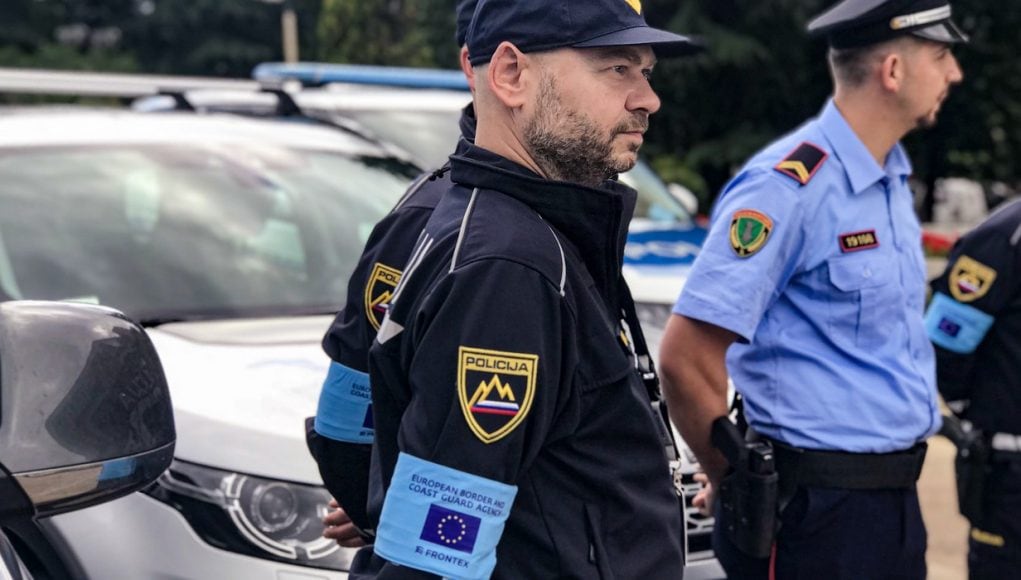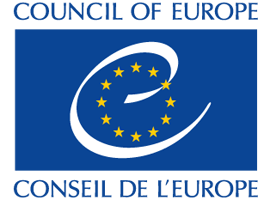Photo: Frontex
Passenger arriving at Belgrade Airport will witness the following scene: a police officer from one of the European Union (EU) member states, together with colleagues from Serbia, stops and examines documents of other arriving passengers to determine if any of them is, by chance, forcibly returned from the EU. Scene two: BBCs report „Inside Bosnia nightmare migrant camps” is broadcasted, provoking general outrage and condemnation. And three: following a statement by the Croatian President that the country’s police are applying “a little bit of force” on the border between Croatia and Bosnia and Herzegovina, Human Rights Watch sends a letter to the EU institution charged with the matter – Frontex (European Agency for Border and Coast Guard), warning against the practice of “pushback”. (agency’s unmanned aerial vehicle serves to monitor the problematic border). So in the context of enlargement increasingly brought into question, one thing happened. The EU has directly involved the countries of the region in the implementation of its migration policy; and it did so because these lie on both the “migrant route” and its “external border”.
Five Western Balkan countries – Albania, Bosnia and Herzegovina, North Macedonia, Serbia and Montenegro – have signed “status agreements” with Frontex past year. Frontex officials were thus enabled to act both at the border and in countries’ interior. The executive mandate that officers have at their disposal enables them (with host assistance or presence) to intercept and control persons and vehicles in situations where there is suspicion of irregular migration. The number of migrants, steadily increasing since November 2017, has placed Bosnia under particular pressure: hence it is not surprising that Dragan Mektić, country’s security minister, said “we shall see if we from the Western Balkans can become members of the Frontex”. Formally, the agency launched its first non-EU mission in Albania this May. It consists of 50 officers from 12 Member States, with 16 patrol cars and a special thermal imaging vehicle deployed at the border to Greece. What is most interesting, the mission’s mandate is not limited in time and Frontex teams are supervised by their Albanian police colleagues.
Establishing missions, or strengthening Frontex’s presence in third states, as well as EU candidate countries, is only part of Brussels’ new approach to managing migration. In March this year, specialized media were aroused by allegations that in Warsaw (where Frontex headquarters is situated) what was first tried in 2017 was being renegotiated: whether the agency can, on behalf of “third countries” take over the deportations of persons that have been denied request for asylum. This might in practice lead to Frontex returning Pakistani nationals to whom Serbia’s Commission for Asylum had denied request. Given the comparatively lower standards of protection for asylum seekers and the danger of the agency extraditing someone threatened with persecution, or worse, this lit a warning sign in the expert community. The only assurance in the third country in question was its obligation to be a signatory party to the European Convention on Human Rights and the 1951 Refugee Convention.
Nevertheless, in doing so, Frontex will be significantly strengthened – and enlarged. Three years after reform and increased funding, European Commissioner for Migration Dimitris Avramopoulos announced in May that by 2027 the agency would have 10,000 members. It will be a separate, uniformed service; and no longer rely on agents temporarily seconded by 28 member states. Their task will be – as before – to intercept new arrivals; prevent any travel that is not allowed and speed up the return of people who have been denied asylum.
A budget increased by a third will also be spent on technical innovations. At the Lisbon International Airport, the agency is testing “biometrics on the move”, software that allows “remote facial recognition” and “contactless fingerprint” reading to allow EU citizens (in the first phase) to pass border controls faster. In cooperation with the Greek Coast Guard, the use of ground-controlled balloons is being tested on the island of Samos to allow permanent monitoring of the maritime route. Motion detecting sensors provided by the Portuguese Navy are used in parallel.
The work (and growth) of Frontex left few indifferent. In its reports and forecasts, the agency points out that there is no longer a “burning crisis” of migration in Europe. The number of people who managed to reach any of the member states is decreasing – in 2018 there were 27% less than in 2017, or as much as 92% less than in 2015, which is considered to be the peak of migrant crisis. However, what Frontex has actually succeeded in is merely the control of the terrestrial (Balkan) route. In the meantime, the pressure on the maritime route has increased (there are two in the understanding of the Frontex – the “Eastern Mediterranean” and the “Western Mediterranean”), far more dangerous. Thus, the number of those crossing from Morocco has increased five-fold, and in the east, the border with Greece and Turkey, a third more illegal crossings have been recorded than in 2017 (over 56,000).
Serbia has nothing but to continue its co-operation with Frontex. In managing migration (where irregular migrations constitute only one part), it is ideologically, organizationally and financially dependent on the European Union. The support that the current government enjoys is ultimately tied to its ability to “control” migration flows. Frontex will inevitably become more robust, but the question remains whether this will make the EU’s “external borders” safer. Let us not forget, they also depend on a number of bilateral agreements, the most important of which is with Turkey. Erdogan can always let the three million Syrians go through, and thus provoke a reprisal of 2015 – far more terrible, as a number of countries have announced that they will, if necessary, defend their border by force.
First published in Novi magazin weekly no. 445, 7 November 2019













